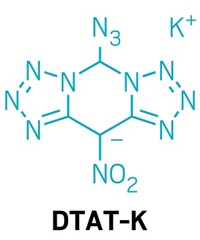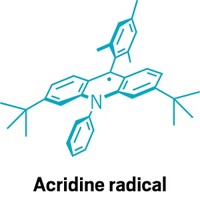Advertisement
Grab your lab coat. Let's get started
Welcome!
Welcome!
Create an account below to get 6 C&EN articles per month, receive newsletters and more - all free.
It seems this is your first time logging in online. Please enter the following information to continue.
As an ACS member you automatically get access to this site. All we need is few more details to create your reading experience.
Not you? Sign in with a different account.
Not you? Sign in with a different account.
ERROR 1
ERROR 1
ERROR 2
ERROR 2
ERROR 2
ERROR 2
ERROR 2
Password and Confirm password must match.
If you have an ACS member number, please enter it here so we can link this account to your membership. (optional)
ERROR 2
ACS values your privacy. By submitting your information, you are gaining access to C&EN and subscribing to our weekly newsletter. We use the information you provide to make your reading experience better, and we will never sell your data to third party members.
Synthesis
ACS Meeting News: Chemists discover a safe, green method to process red phosphorus
by Steve Ritter
March 16, 2016

When it comes to making phosphorus compounds, chemists have traditionally relied on white phosphorus, P4, a tetrahedral-shaped allotrope of the element. The one downside with white phosphorus is that it’s toxic and flammable. Red phosphorus, an air-stable amorphous oligomeric allotrope, is a safer alternative. But chemists have had difficulty processing the relatively inert material in large quantities without resorting to high temperature and strong reducing agents.
Florida State University chemists have now solved that problem by discovering an easy way to convert red phosphorus to soluble polyphosphides (Angew. Chem. Int. Ed. 2016, DOI: 10.1002/anie.201511186). Alina Dragulescu-Andrasi, a postdoctoral researcher in Michael Shatruk’s group, provided details of the approach during a Division of Inorganic Chemistry symposium on Monday at the American Chemical Society national meeting in San Diego.
The team simply passes a solution of inexpensive potassium ethoxide in an organic solvent through red phosphorus under mild heating to produce P5–, P162-, and P213-. These variously sized clusters, which the researchers isolate as potassium or tetrabutylammonium salts, could be used to synthesize phosphorus compounds or to make two-dimensional semiconductors and lithium-ion battery anodes.
Taking the process a step further, the researchers adapted it to run as a continuous-flow reaction by passing potassium ethoxide through a stainless-steel column packed with red phosphorus, generating multigram amounts of the soluble polyphosphides. The Florida State team’s work is funded in part by a Small Business Innovation Research grant in collaboration with Chemring Ordnance, a Florida-based munitions company.
“This appears to be a relatively safe and convenient methodology for generating soluble salts of polyphosphide anions,” commented MIT’s Christopher C. Cummins, who builds new compounds from elemental phosphorus. “It should open the door to more widespread study and application of these interesting little bits of reduced phosphorus.”
Other Related Stories:




Join the conversation
Contact the reporter
Submit a Letter to the Editor for publication
Engage with us on Twitter